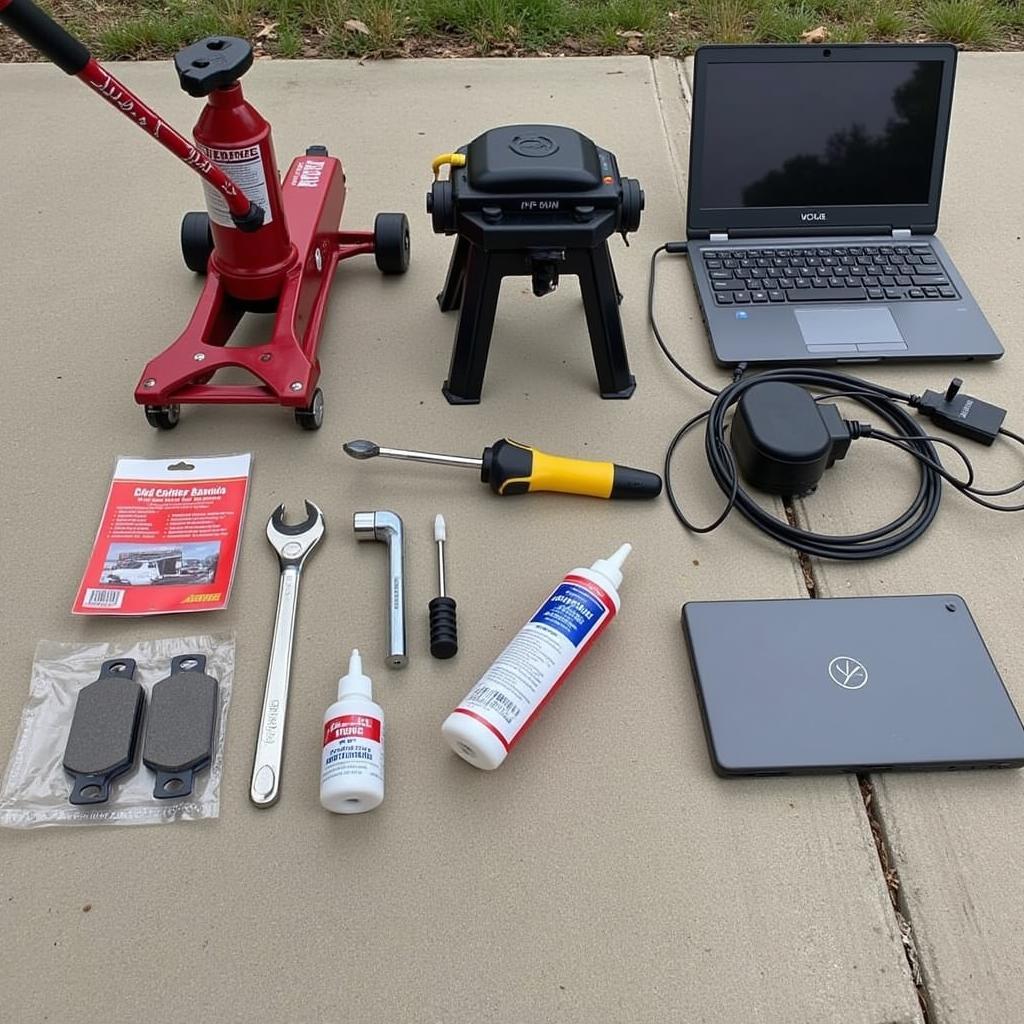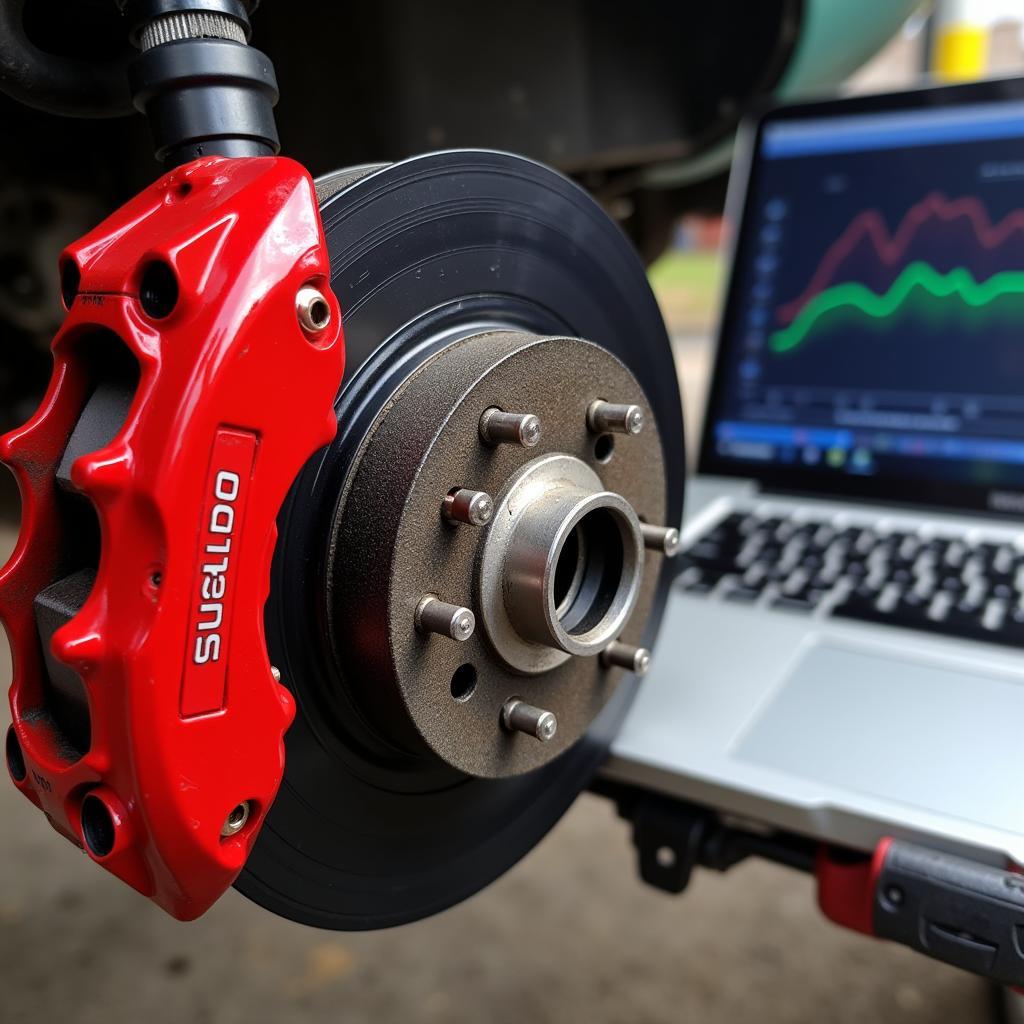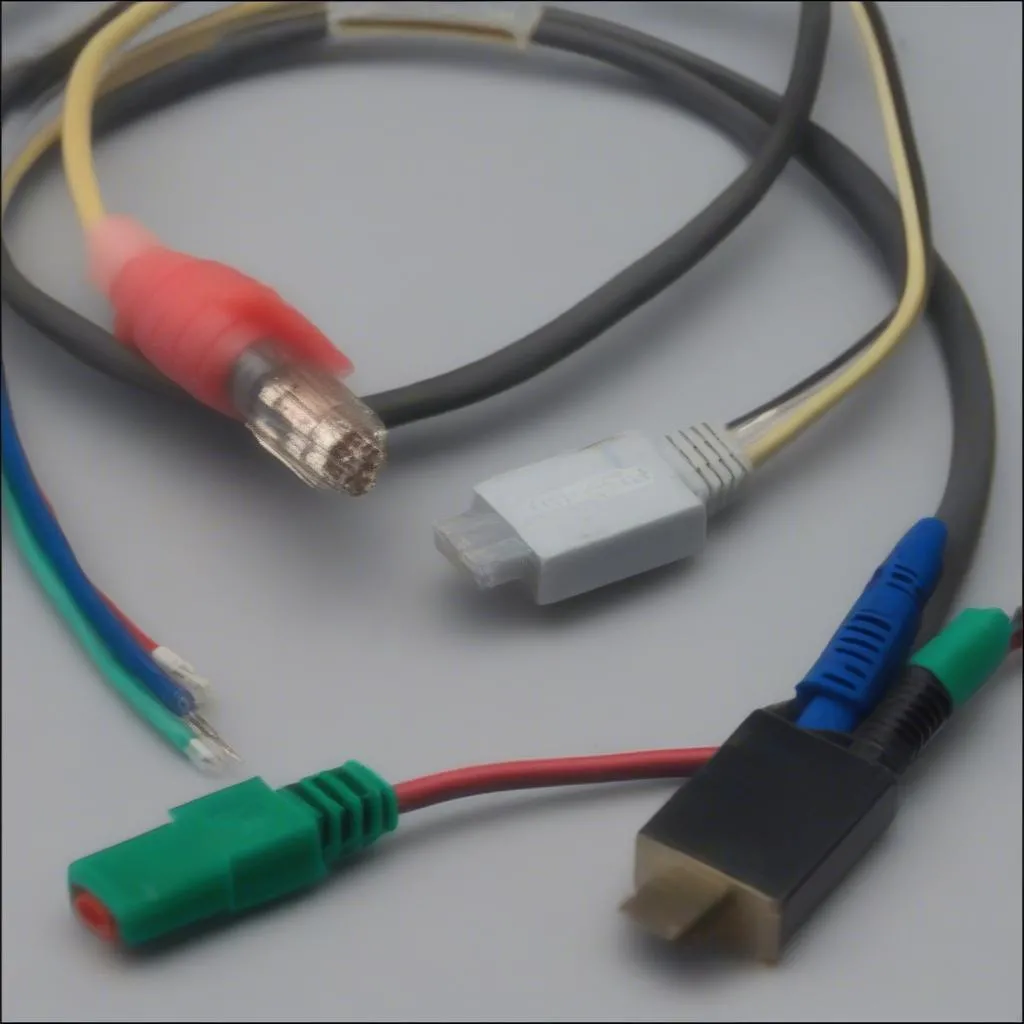Replacing your Audi A4 B8’s rear brake pads is a job you can tackle yourself with the right tools and guidance, especially with the help of VCDS (VAG-COM Diagnostic System). This comprehensive guide will walk you through the process, providing detailed instructions and expert tips for a smooth and successful brake pad replacement.
Understanding the Importance of Rear Brake Pad Replacement
Brake pads are crucial for safe and effective stopping. Worn-out rear brake pads compromise your braking performance, leading to longer stopping distances and potential safety hazards. Regular inspection and timely replacement are essential for maintaining optimal braking efficiency and ensuring your safety on the road. Ignoring worn brake pads can also lead to damage to your rotors, increasing repair costs down the line. Using VCDS during this process allows for precise electronic parking brake (EPB) retraction and calibration, crucial for a hassle-free replacement.
Gathering Your Tools and Materials for Audi A4 B8 Rear Brake Pad Replacement
Before you begin, gather all necessary tools and materials. This will streamline the process and prevent interruptions. You’ll need: new rear brake pads specifically designed for your Audi A4 B8, a jack and jack stands, a wheel lug wrench, a brake caliper rewind tool, a flathead screwdriver or brake pad spreader, brake cleaner, a wire brush, high-temperature brake grease, and of course, your VCDS cable and software.
 Audi A4 B8 Rear Brake Pad Replacement Tools
Audi A4 B8 Rear Brake Pad Replacement Tools
Step-by-Step Guide to Replacing Your Audi A4 B8 Rear Brake Pads with VCDS
-
Prepare Your Vehicle: Park your Audi A4 B8 on a level surface, engage the parking brake, and chock the front wheels for safety.
-
Connect VCDS: Connect your VCDS cable to your laptop and the OBD-II port in your car. Turn the ignition on but do not start the engine.
-
Retract the Electronic Parking Brake (EPB): Open the VCDS software, select “Select Control Module,” then “53 – Parking Brake.” Select “Basic Settings” and follow the prompts to retract the EPB. This is essential for accessing the rear brakes.
-
Loosen Lug Nuts: Loosen the lug nuts on the rear wheels before jacking up the car.
-
Lift and Secure the Vehicle: Lift the rear of the vehicle using a jack and securely place jack stands under the designated lifting points.
-
Remove the Wheel: Remove the wheel by unscrewing the lug nuts completely.
-
Remove the Caliper: Locate the caliper bolts on the back of the caliper. Remove these bolts to free the caliper. Support the caliper with a wire or bungee cord to prevent strain on the brake line.
-
Replace the Brake Pads: Remove the old brake pads. Clean the caliper bracket with a wire brush and brake cleaner. Apply high-temperature brake grease to the contact points of the new brake pads and install them into the caliper bracket.
 Audi A4 B8 Rear Brake Pad Installation with VCDS
Audi A4 B8 Rear Brake Pad Installation with VCDS
-
Rewind the Caliper Piston: Use the caliper rewind tool to rotate the piston back into the caliper. This is necessary to accommodate the new, thicker brake pads.
-
Reinstall the Caliper: Reinstall the caliper and tighten the bolts to the manufacturer’s specified torque.
-
Reinstall the Wheel: Place the wheel back onto the hub and tighten the lug nuts hand-tight.
-
Lower the Vehicle: Carefully lower the vehicle using the jack.
-
Torque Lug Nuts: Once the vehicle is on the ground, torque the lug nuts to the manufacturer’s specified torque using a torque wrench.
-
Calibrate the Electronic Parking Brake (EPB): Using VCDS, go back to “53 – Parking Brake,” then “Basic Settings,” and follow the prompts to calibrate the EPB. This ensures optimal parking brake function.
-
Test the Brakes: Test the brakes gently at low speeds before driving normally.
Common Questions about Audi A4 B8 Rear Brake Pad Replacement
Why is VCDS important for this process? VCDS is essential for safely and correctly retracting and calibrating the electronic parking brake (EPB).
How often should I replace my rear brake pads? Brake pad life varies depending on driving conditions, but generally, they should be inspected every 10,000-15,000 miles.
What are the symptoms of worn brake pads? Common symptoms include squealing or grinding noises, a spongy brake pedal, and reduced braking performance.
Conclusion
Replacing your Audi A4 B8 rear brake pads with VCDS is a manageable DIY project that can save you money and give you the satisfaction of working on your own car. Remember to always prioritize safety and consult your vehicle’s service manual for specific torque specifications and procedures. By following these steps and using VCDS correctly, you can ensure optimal braking performance and maintain the safety of your Audi A4 B8.
FAQ
- Can I replace just one rear brake pad? No, always replace brake pads in axle pairs (both left and right).
- Do I need to bleed the brakes after replacing the pads? Usually not, unless you’ve opened the brake lines.
- What if my EPB won’t release with VCDS? Consult a qualified technician.
- Can I use any brake pads on my Audi A4 B8? No, use pads specifically designed for your model.
- What if my brakes still feel spongy after replacing the pads? There could be air in the lines or another issue; consult a technician.
- How do I know if my rotors need replacing too? Look for deep grooves or scoring on the rotor surface.
- Where can I find the torque specifications for my car? Consult your owner’s manual or a reliable online source.
Need more help? Check out our other articles on brake maintenance and VCDS usage. You can also contact us directly via WhatsApp: +1 (641) 206-8880, Email: CARDIAGTECH[email protected] or visit us at 276 Reock St, City of Orange, NJ 07050, United States. We have a 24/7 customer support team ready to assist you.

